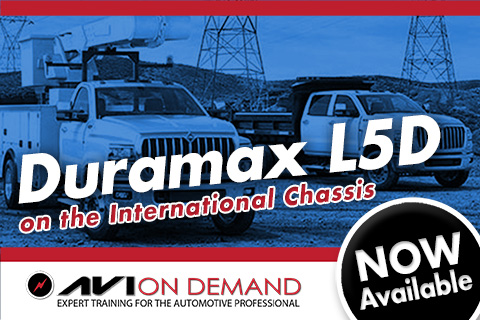
Hearing Loss
April 13, 2009
By Sam Bell. The potential for hearing loss in your shop is very real and not something to be ignored. Sam Bell shares his personal experiences, and offers some good advice on this important topic. His report, which follows, provides “sound” advice to anyone who’s exposed to high levels of noise in the workplace.
My wife got tired of repeating herself, and began to worry that maybe—just maybe—I wasn’t merely ignoring her. So it was that one day earlier this year I found myself at the audiologist’s office for a hearing test. According to the audiologist, a very large percentage of working automotive service technicians suffer significant hearing loss. In her experience, most are directly traceable to the use of air tools, especially impact guns and air hammers.
John Tanis, a BMW specialist from Rocky River, OH, suffers from a profound hearing loss. Like my audiologist, he hastens to point out that hearing loss is cumulative.
Hearing loss can be temporary or permanent. Temporary loss often results from exposure to relatively brief, but extremely intense, sounds. Permanent loss is more likely to be the result of prolonged exposure to painful noise levels. If you don’t find the sound of unmuffled air tools painful, you may already be experiencing some degree of hearing loss.
There is good news on the prevention front, however. Most hearing loss is readily preventable. If you’ve ever seen the flight deck crew of an air- craft carrier, or the ground crew at an airport, you already know that the most effective form of hear- ing protection is wearing those “mouse ears.” They’re far more effective over the long haul than other in-the-ear devices, such as earplugs. Even so, regular use of “hearing bands” or earplugs is far better than no protection at all. Indeed, Tanis recommends the hearing bands because “they’re cheap and easy. You just keep them with you around your neck all the time.”
Recent advances in pneumatic tool design also offer considerable reason to cheer. The newest gener- ation of impact guns develops substantially more torque while emitting much less noise. In fact, some manufacturers have encountered resistance to the new guns because technicians have equated their quiet manners with a lack of power. Tanis’s other ad- vice to his fellow technicians is “Get rid of your loud tools.” On some of the newer impact guns, the ex- haust is routed away from the user, so they’re much quieter. You’d be surprised at the “silent” power.
One of MOTOR’s Top 20 Tools award winners for 2006 was something called the Exhausted Air Recycling System (E.A.R.S.). In addition to claimed compressor energy savings of up to 30%, the system also significantly reduces air tool noise, in some cases to less than 10% of its original level.
There’s good news to report as well concern- ing the treatment of hearing loss. Newer hear- ing aids are smaller, lighter and more efficient than older designs, and sport much greater bat- tery life. The newer ones also work better with telephones. Of course, this good news carries a steep price tag. A pair of good, midlevel digital hearing aids like the ones Tanis uses will set you back about $4000; high-end devices may cost another 50% or more, another good reason to protect your hearing now.
Unfortunately, there’s a built-in obstacle that even the most sophisticated devices cannot overcome. Waiting before addressing the prob- lem allows the brain to commandeer unused neural pathways and put them to other uses. But with appropriate rehabilitation and therapy, you can often regain lost hearing abilities. The key is to seek professional help as soon as the problem is identified.
I was lucky. I’ve been wearing my very stylish mouse ears diligently for many years now, and it has paid off. Testing showed that while my right ear has experienced a slight diminution of hear- ing in the higher frequencies, my overall hear- ing remains well within normal limits. In fact, my left ear sports better-than-normal hearing. So now my wife sits on my left side, and I can hear her just fine.

